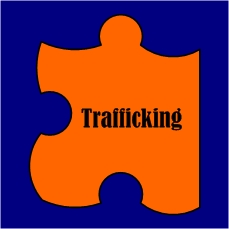Book: The Traffic in Babies: Cross Border Adoption and Baby-Selling Between the United States and Canada, 1930-1972.

“When the Life and Health Sanitarium opened in Nova Scotia in 1928, it promised maternity care for married couples and a discreet place to come to for women who were unmarried.
In reality, the house, later renamed the Ideal Maternity Home, is alleged to have charged exorbitant fees to unwed mothers and adoptive families and is accused of starving to death any baby that was deemed unadoptable.
This dark part of Canadian history is documented in Karen Balcom’s 2011 book, The Traffic in Babies: Cross Border Adoption and Baby-Selling Between the United States and Canada, 1930-1972. Balcom, a history and women’s studies professor at McMaster University, came to Sudbury to speak at Laurentian University for Women’s History Week.
“Originally, what I was actually more interested in was this problem of we develop child welfare systems based on the rules in one province, the rules in the next province. Well, what happens if the rules cover one jurisdiction, but the people don’t stay put?” Balcom said, explaining how she came to write the book.
“I discovered a number of cases where the movement was not just across the border from one province to another, but also between Canada and the United States. That added another level of complexity. So, when you move from one province to another, or from one country to another, and the rules are based on a person staying in one place, who is in charge?”
Her Tuesday evening lecture was about the book. Today at 10 a.m., she’ll be talking about “Birth Mothers, Adoptive Parents and Children in Histories of Adoption” in Laurentian’s arts building, room A226.
The problem with cross-border adoptions, Balcom told The Star, is that often safeguards put in place to protect the children and parents get tossed aside.
“The clearest example has to do with a large black market of babies operating out of Montreal in the 1950s. And in that case, when this was finally blown open through a series of joint American and Canadian police investigations, the discovery was that roughly from the mid-1940s to the mid- 1950s, as many as 2,000 or 3,000 children and small infants had been sold to families in the United States.
“These children would have been the children of unwed French-Canadian mothers, and they would have been women who turned to the black market because they felt they had very few good choices in the situation they were in … Those children were mostly adopted by Jewish families in the New Jersey area. In that time and place, to have a child who was born to a Catholic woman adopted by a Jewish family contravened lots of social welfare laws.”
Talking about adoption in the present day, Balcom said what’s surprising is how many children are now adopted and taken out of the United States, especially because the number of transnational adoptions have fallen by 40% since 2004.
“Canadians are adopting relatively large numbers of children from the United States,” she said. “The United States is second or third, depending on the year, as a source country for children who are adopted by Canadians.
“The States remains a large receiving country, but now it’s also in the top 20 sending countries worldwide. About half the children who leave the United States end up in Canada.”
Wednesday’s lecture will focus on the changing face of transnational adoptions -especially the changes in the United States -as well as the pressure women faced in the post Second World War to 1970s era, said Balcom.”
Exploring cross-border adoptions
[Sudbury Star 10/17/12 by Laura Stricker]
REFORM Puzzle Piece


I read this paper by Karen Balcom a couple of years ago – I will have to get her book. The paper can be found here:
http://journals.hil.unb.ca/index.php/acadiensis/article/view/10719/11434
The IDM home was terrible – kudo’s to the SW who never gave up closing the home despite the officials who blocked him.
Bette Cahill has two books on the subject as well. The first book was also made into a movie that is available on DVD. I actually watched it this morning on youtube. Butterbox Babies Baby Sales, Baby Deaths – New Revelations 15 years later is the second of the two books – the first I think is just called Butterbox Babies..
The survivors of IDM have a webpage and have had reunions and a couple books written about their stories.
http://www.idealmaternityhomesurvivors.com/
Thanks for sharing this information!